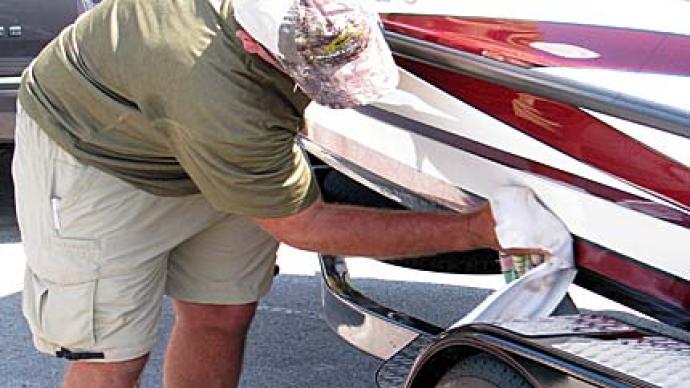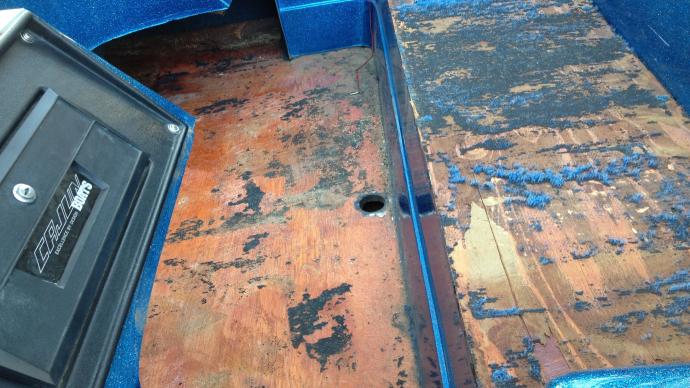
If your boat has the blues, especially dull blues, you can make it shine like a dime if you are willing to do a little work.
It doesn't matter if your boat has a metal flake finish or is a solid color, that faded look can appear. It is usually the result of too much sunlight over some time, but it is a problem that can be corrected. You can do it with a bit of elbow grease on a weekend when you aren't going fishing or on a weekday when you have the day off from work.
Boats with metal flake finishes will require more time and work to get them back into shape, but it is easy. Those with solid colors are much easier, but the result is just what you would want. You can end up with a boat that looks almost like it did the day it was manufactured.
I've talked to many boat repair people over the years, and one of the best I've met is Alan Dunn of AAA Fiberglass and Tackle in Grand Prairie (Texas). Alan has restored lots of boats to near their original luster. Just as importantly, he is a fisherman and will be among the first to offer advice on how you can do the work yourself to put your boat back into top shape.
The first test to see what shape your boat is in is applying some wax to a particular area. If it doesn't shine the way it used to, if it looks cloudy, you no doubt have an oxidation problem. But it can be solved. All it will take is some work.
Dunn said any boat with an oxidation problem should be buffed with wax. Don't just rub it on and wipe it off with a towel. Use a buffer. If that doesn't work, apply a polishing compound and wax it, again using the buffer. This should show an improvement, Dunn said.
If it doesn't, and the boat still doesn't shine like you think it should, you will need to do some extra work sanding. Dunn said you should choose 600 to 1000-grit sandpaper and use water to wet sand the finish.
If it has a metal flake finish, test the thickness of the first layer of transparent Gelcoat by, while sanding lightly, observing to see if some of the metal flake turns to a different color, such as a red metal flake turning silver. If you observe that, quit sanding.
You can sand only a tiny area on the worst areas of the boat and observe what you are doing. "We only sand a very thin amount of it off a boat," Dunn said. "You can rub it lightly with your fingers and feel when it becomes smooth. When you get it smooth, stop."
The next step would be to use a towel and dry the area, then apply a thin layer of compound and use a buffer. Once you get the shine and luster you are looking for, wet sand it again, add another layer of compound, and buff it once more.
On boats with solid colors, not metal flake, use the same procedures, but use extreme caution not to sand through the colored gel coat. Dunn said that if you notice the color is beginning to turn dark, you've gone too far.
With any of these procedures, test small areas that are out of sight or not noticeable so that you do not damage the most visible parts of the boat.
There is only so much gelcoat on any boat. If you don't take care of it and wax and buff it regularly, you will have an oxidation problem sooner or later.
On metal flake boats especially, you can see when a problem is occurring when you begin to see the metal flake turning silver. A metal flake is simply a piece of metal that is painted. If it becomes oxidized, you have lost the bright paint job on the metal flakes.




